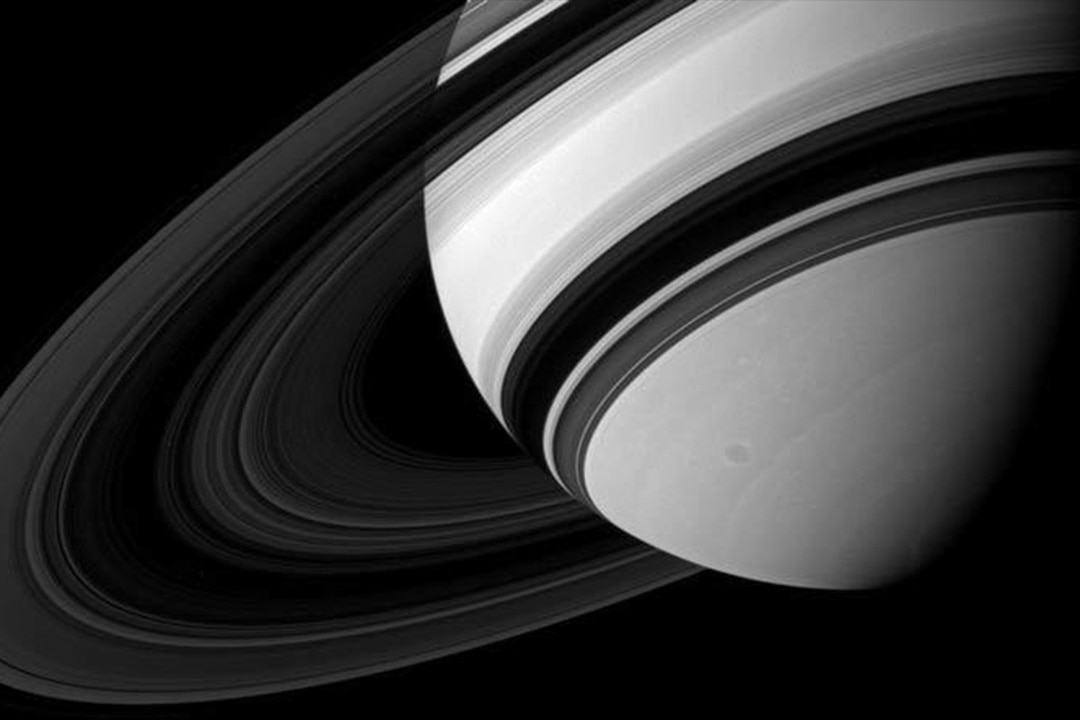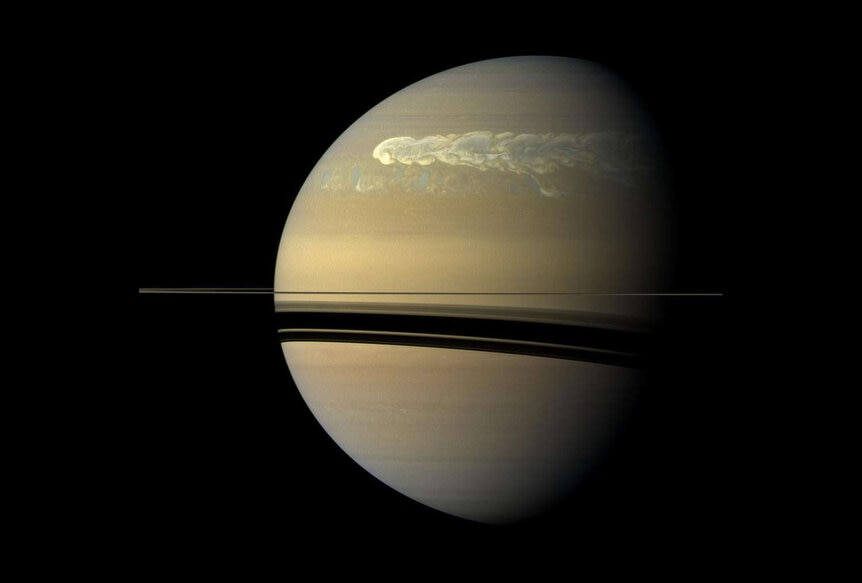Saturn's Rings Will Disappear (Temporarily) in 2025
Don't worry, they'll be back.

When Cecilia Kass (Elizabeth Moss) decided to end her relationship with brilliant inventor turned abusive partner Adrian Griffin (Oliver Jackson-Cohen), she might have hoped to never see him again. Unfortunately, Cecilia got her wish in the most horrifying way when Griffin used cutting edge technology to turn himself into The Invisible Man.
Rendering a person invisible is frightening enough, but vanishing an entire planetary feature is on a whole different level. Presently, Saturn is in the process of a year-and-a-half-long magic trick culminating in the disappearance of its rings.
Saturn's Rings Have Disappeared Before and It's Happening Again
Saturn and the Earth don’t have a whole lot in common, but both orbit the Sun at an angle to the ecliptic plane. On Earth, the planet’s angle with respect to the Sun as it orbits is what gives us the seasons, and the same is true on Saturn. Twice a year, the planet’s position with respect to the Sun switches from favoring one hemisphere to the other. On Earth, we experience those changes as Summer or Winter. Regardless of the planet, the moment of transition, when the Sun is striking directly overhead at the equator, is known as an equinox.
RELATED: A Double Moon Collision Could Have Formed Saturn's Rings
Saturn has one obvious difference from Earth when it comes to equinoxes: the incredible ring system stretching out from its equator. The planet itself is roughly 116,500 kilometers (72,400 miles) across, but the rings stretch out 282,000 kilometers (175,000 miles), nearly 2.5 times as wide, making the angle of the planet’s equator startlingly apparent.
Because Saturn orbits so far away, one year there takes roughly 30 Earth years, which means an equinox occurs roughly every 15 years from our point of view. For us to see the rings, sunlight has to strike them and bounce back to our eyes or telescopes on Earth. But as Saturn approaches the equinox, sunlight will hit the rings at an increasingly shallow angle. On the equinox, the Sun will be directly overhead, illuminating only the relatively thin kilometer-thick edge. During this period, the rings reflect almost no sunlight and cast only a thin shadow on the planet, rendering them practically invisible.
The last Saturnian equinox happened in 2009, when the angle shifted toward the north half of the planet. If you look through a telescope tonight, you’ll see Saturn’s Northern Hemisphere and light bouncing back from the northern side (top) of the ring system. If you look tomorrow, you’ll see practically the same thing, but the angle will have shifted imperceptibly toward the south. By May 6, 2025, the rings will have disappeared, having turned their edge toward us.
On the other side of the equinox, earthly observers will have an opportunity to see the southern (bottom) side of the rings and a clearer view of the planet’s tush. That view will only get better for the following several years until it’s time to start shifting toward the north again and the rings disappear, albeit temporarily, all over again.
As disappearing acts go, this one is pretty good. Catch another good one in The Invisible Man, streaming now on Peacock.





























